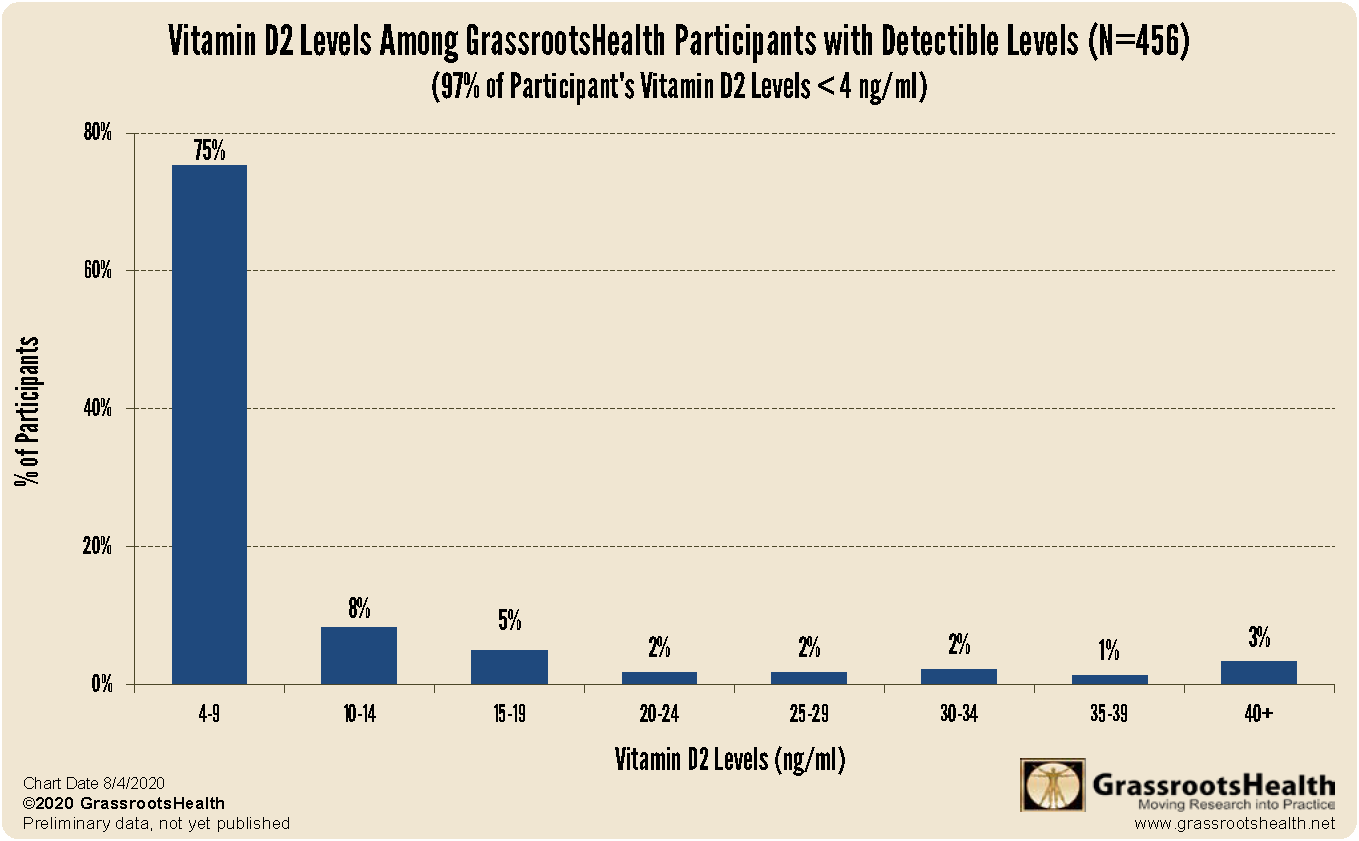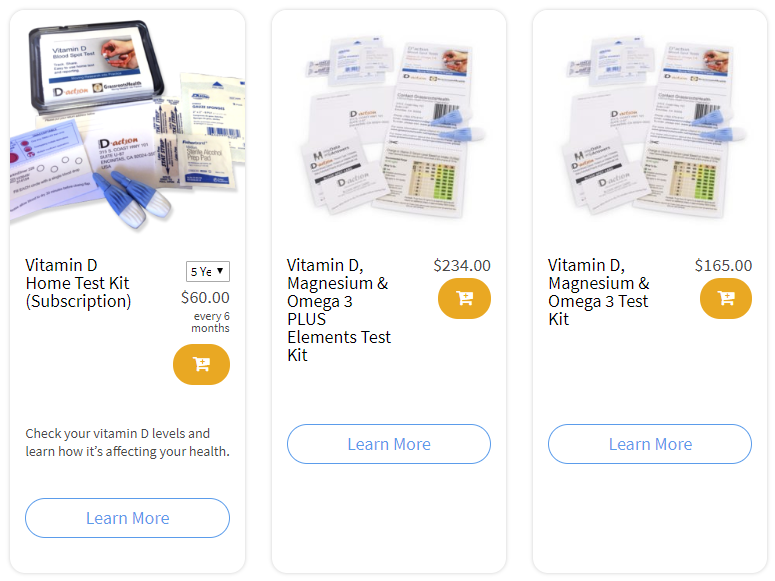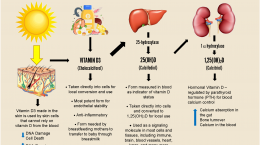Published on August 13, 2020
 Both vitamin D3 and vitamin D2 contribute to an individual’s total vitamin D level [i.e. 25(OH)D concentration]. There are several differences between vitamin D2 and vitamin D3. Vitamin D3, which is more effective at raising 25(OH)D levels, is the form of vitamin D that is naturally made in your body from UV exposure and the most common form found in over the counter supplements. Vitamin D2 is found in mushrooms, in some supplements, and in some fortified foods (such as rice milk and soy milk). Vitamin D2 has also been the form typically prescribed by doctors for deficient patients because until recently, D2 was the only form that many insurance plans would cover. The most common vitamin D prescription is for 50,000 IU of vitamin D2 to be taken weekly for 8 weeks, however, vitamin D3 in 50,000 IU is also available, and, there may be additional benefits of taking vitamin D in daily doses vs weekly.
Both vitamin D3 and vitamin D2 contribute to an individual’s total vitamin D level [i.e. 25(OH)D concentration]. There are several differences between vitamin D2 and vitamin D3. Vitamin D3, which is more effective at raising 25(OH)D levels, is the form of vitamin D that is naturally made in your body from UV exposure and the most common form found in over the counter supplements. Vitamin D2 is found in mushrooms, in some supplements, and in some fortified foods (such as rice milk and soy milk). Vitamin D2 has also been the form typically prescribed by doctors for deficient patients because until recently, D2 was the only form that many insurance plans would cover. The most common vitamin D prescription is for 50,000 IU of vitamin D2 to be taken weekly for 8 weeks, however, vitamin D3 in 50,000 IU is also available, and, there may be additional benefits of taking vitamin D in daily doses vs weekly.
What levels of vitamin D2 do GrassrootsHealth participants have?
The vitamin D test offered by GrassrootsHealth provides your vitamin D2 level [25(OH)D2], vitamin D3 level [25(OH)D3], and total vitamin D level [25(OH)D]. Unless you are taking a vitamin D2 supplement or eat a lot of mushrooms or D2 fortified foods, your vitamin D2 level will most likely be 0 (or below the detection limit of the test which is 4 ng/ml). Among the 13,794 participants who have tested their vitamin D levels, only 3% have had detectable levels of 25(OH)D2 in their blood. The chart below shows the distribution of 25(OH)D2 levels among participants with detectable levels.
Among participants with detectable levels, the average 25(OH)D2 level was 6 ng/ml and ranged from 4 ng/ml to 88 ng/ml. A majority (75%) have levels less than 10 ng/ml, which usually indicates some vitamin D2 in the diet (mushrooms or fortified foods). Click here for more information about vitamin D2.
Do You Know Your Vitamin D Levels?
Are you getting enough from sun, diet, and supplements? Have you reached your target level? Discover how much vitamin D may be necessary to help you achieve and maintain your target vitamin D level. Test today to find out – and use the D*calculator to make any necessary adjustments, then re-test to see if it’s working for you!
Are You Getting Enough Vitamin D to Help Yourself?
We’re in a time of great crisis that could be greatly affected by making sure you and everyone you know has a serum level of at least 40 ng/ml. Help us help you.
Do you know what your vitamin D level is? Be sure to test today to find out, and take steps to keep it within a target of 40-60 ng/ml or 100-150 nmol/L! Give your immune system the nutrients it needs to support a healthy you and protect yourself from unnecessary diseases.
GrassrootsHealth Nutrient Research Institute is preparing to do a Community RCT with the use of our myData-myAnswers nutrient health system that over 15,000 people are already using for their health. We will demonstrate how one can use the Nutrient Research Model established by Dr. Robert Heaney to establish the effect of vitamin D serum levels of at least 40 ng/ml (100 nmol/L) on risk reduction with different ethnicities in the population. Please let us know if you’re interested in helping sponsor this project.
CLICK HERE for updates and new information about the project.
Through GrassrootsHealth Nutrient Research Institute, you can also test your essential elements magnesium, copper, zinc and selenium, toxins such as lead, mercury and cadmium, as well as your omega-3 levels, inflammation levels and thyroid stimulating hormone (TSH) level. Find out your levels today! Log on to the test selection page (click the link below) to get your tests and see for yourself if your levels can be improved.
Make sure you track your results before and after, about every 6 months!
Click Here to Access the Test Page
How can I track my nutrient intake and levels over time?
To help you track your supplement use and nutrient levels, GrassrootsHealth has created the Personal Health Nutrient Decision System called
For each specific supplement, you can track what days you take it, how much, and many other details. This will help you know your true supplemental intake and what patterns of use work for you to reach and maintain optimum nutrient levels. Check it out today!









